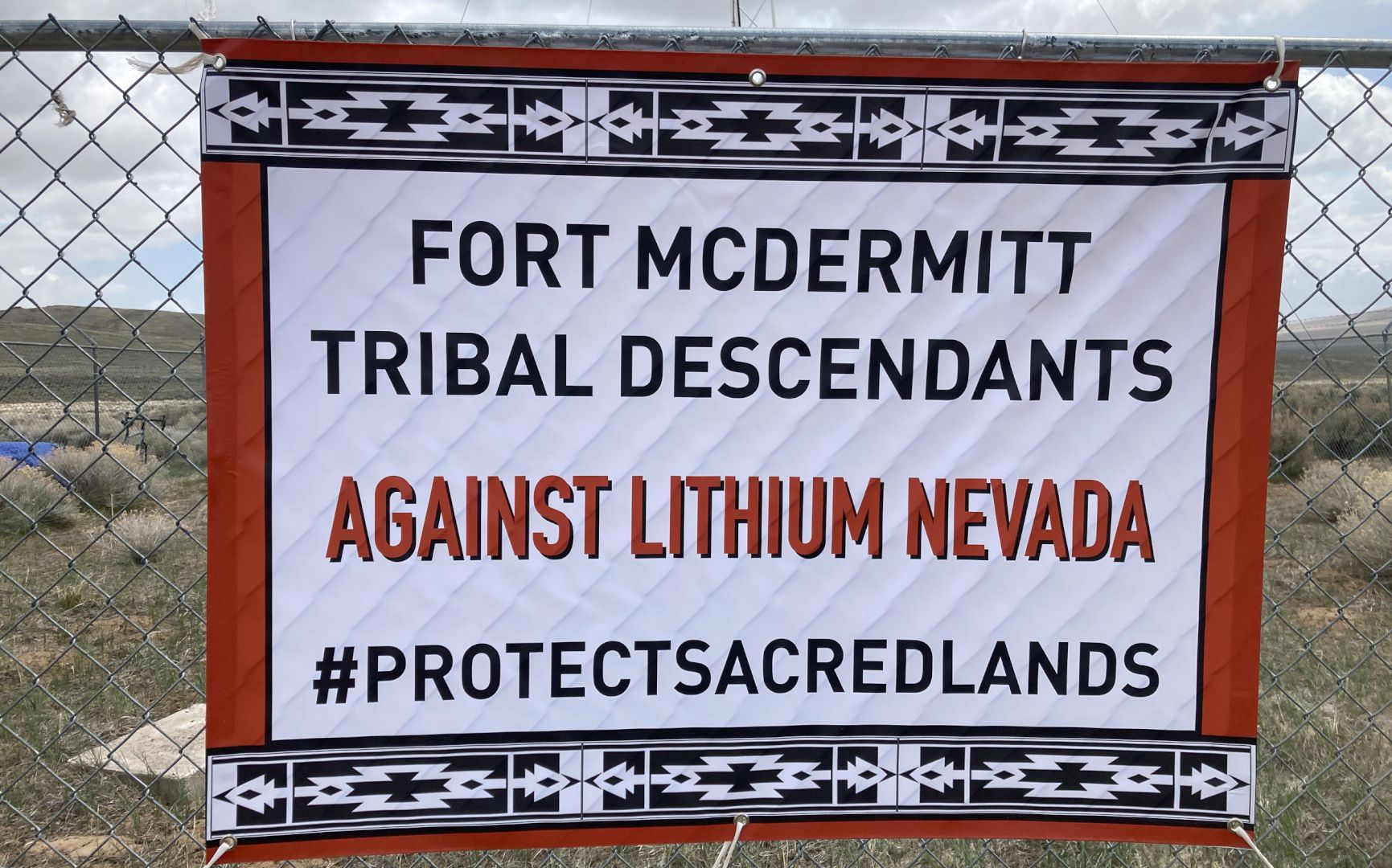
by DGR News Service | May 19, 2021 | Biodiversity & Habitat Destruction, Colonialism & Conquest, Culture of Resistance, Direct Action, Indigenous Autonomy, Listening to the Land, Lobbying, Mining & Drilling, Movement Building & Support, Obstruction & Occupation, Repression at Home, Toxification, White Supremacy
In this statement, Atsa koodakuh wyh Nuwu (the People of Red Mountain), oppose the proposed Lithium open pit mines in Thacker Pass. They describe the cultural and historical significance of Thacker Pass, and also the environmental and social problems the project will bring.
We, Atsa koodakuh wyh Nuwu (the People of Red Mountain) and our native and non-native allies, oppose Lithium Nevada Corp.’s proposed Thacker Pass open pit lithium mine.
This mine will harm the Fort McDermitt Paiute-Shoshone Tribe, our traditional land, significant cultural sites, water, air, and wildlife including greater sage grouse, Lahontan cutthroat trout, pronghorn antelope, and sacred golden eagles. We also request support as we fight to protect Thacker Pass.
”Lithium Nevada Corp. (“Lithium Nevada”) – a subsidiary of the Canadian corporation Lithium Americas Corp. – proposes to build an open pit lithium mine that begins with a project area of 17,933 acres. When the Mine is fully-operational, it would use 5,200 acre-feet per year (equivalent to an average pumping rate of 3,224 gallons per minute) in one of the driest regions in the nation. This comes at a time when the U.S. Bureau of Reclamation fears it might have to make the federal government’s first-ever official water shortage declaration which will prompt water consumption cuts in Nevada. Meanwhile, despite Lithium Nevada’s characterization of the Mine as “green,” the company estimates in the FEIS that, when the Mine is fully-operational, it will produce 152,703 tons of carbon dioxide equivalent emissions every year.
Mines have already harmed the Fort McDermitt tribe.
Several tribal members were diagnosed with cancer after working in the nearby McDermitt and Cordero mercury mines. Some of these tribal members were killed by that cancer.
In addition to environmental concerns, Thacker Pass is sacred to our people. Thacker Pass is a spiritually powerful place blessed by the presence of our ancestors, other spirits, and golden eagles – who we consider to be directly connected to the Creator. Some of our ancestors were massacred in Thacker Pass. The name for Thacker pass in our language is Peehee mu’huh, which in English, translates to “rotten moon.” Pee-hee means “rotten” and mm-huh means “moon.” Peehee mu’huh was named so because our ancestors were massacred there while our hunters were away. When the hunters returned, they found their loved ones murdered, unburied, rotting, and with their entrails spread across the sage brush in a part of the Pass shaped like a moon. To build a lithium mine over this massacre site in Peehee mu’huh would be like building a lithium mine over Pearl Harbor or Arlington National Cemetery. We would never desecrate these places and we ask that our sacred sites be afforded the same respect.
Thacker Pass is essential to the survival of our traditions.
Our traditions are tied to the land. When our land is destroyed, our traditions are destroyed. Thacker Pass is home to many of our traditional foods. Some of our last choke cherry orchards are found in Thacker Pass. We gather choke cherries to make choke cherry pudding, one of our oldest breakfast foods. Thacker Pass is also a rich source of yapa, wild potatoes. We hunt groundhogs and mule deer in Thacker Pass. Mule deer are especially important to us as a source of meat, but we also use every part of the deer for things like clothing and for drumskins in our most sacred ceremonies.
Thacker Pass is one of the last places where we can find our traditional medicines.
We gather ibi, a chalky rock that we use for ulcers and both internal and external bleeding. COVID-19 made Thacker Pass even more important for our ability to gather medicines. Last summer and fall, when the pandemic was at its worst on the reservation, we gathered toza root in Thacker Pass, which is known as one of the world’s best anti-viral medicines. We also gathered good, old-growth sage brush to make our strong Indian tea which we use for respiratory illnesses.
Thacker Pass is also historically significant to our people.
The massacre described above is part of this significance. Additionally, when American soldiers were rounding our people up to force them on to reservations, many of our people hid in Thacker Pass. There are many caves and rocks in Thacker Pass where our people could see the surrounding land for miles. The caves, rocks, and view provided our ancestors with a good place to watch for approaching soldiers. The Fort McDermitt tribe descends from essentially two families who, hiding in Thacker Pass, managed to avoid being sent to reservations farther away from our ancestral lands. It could be said, then, that the Fort McDermitt tribe might not be here if it wasn’t for the shelter provided by Thacker Pass.
We also fear, with the influx of labor the Mine would cause and the likelihood that man camps will form to support this labor force, that the Mine will strain community infrastructure, such as law enforcement and human services. This will lead to an increase in hard drugs, violence, rape, sexual assault, and human trafficking. The connection between man camps and missing and murdered indigenous women is well-established.
Finally, we understand that all of us must be committed to fighting climate change. Fighting climate change, however, cannot be used as yet another excuse to destroy native land. We cannot protect the environment by destroying it.
Sign the petition from People of Red Mountain: https://www.change.org/p/protect-thacker-pass-peehee-mu-huh
Donate: https://www.classy.org/give/423060/#!/donation/checkout
For more on the Protect Thacker Pass campaign
#ProtectThackerPass #NativeLivesMatter #NativeLandsMatter
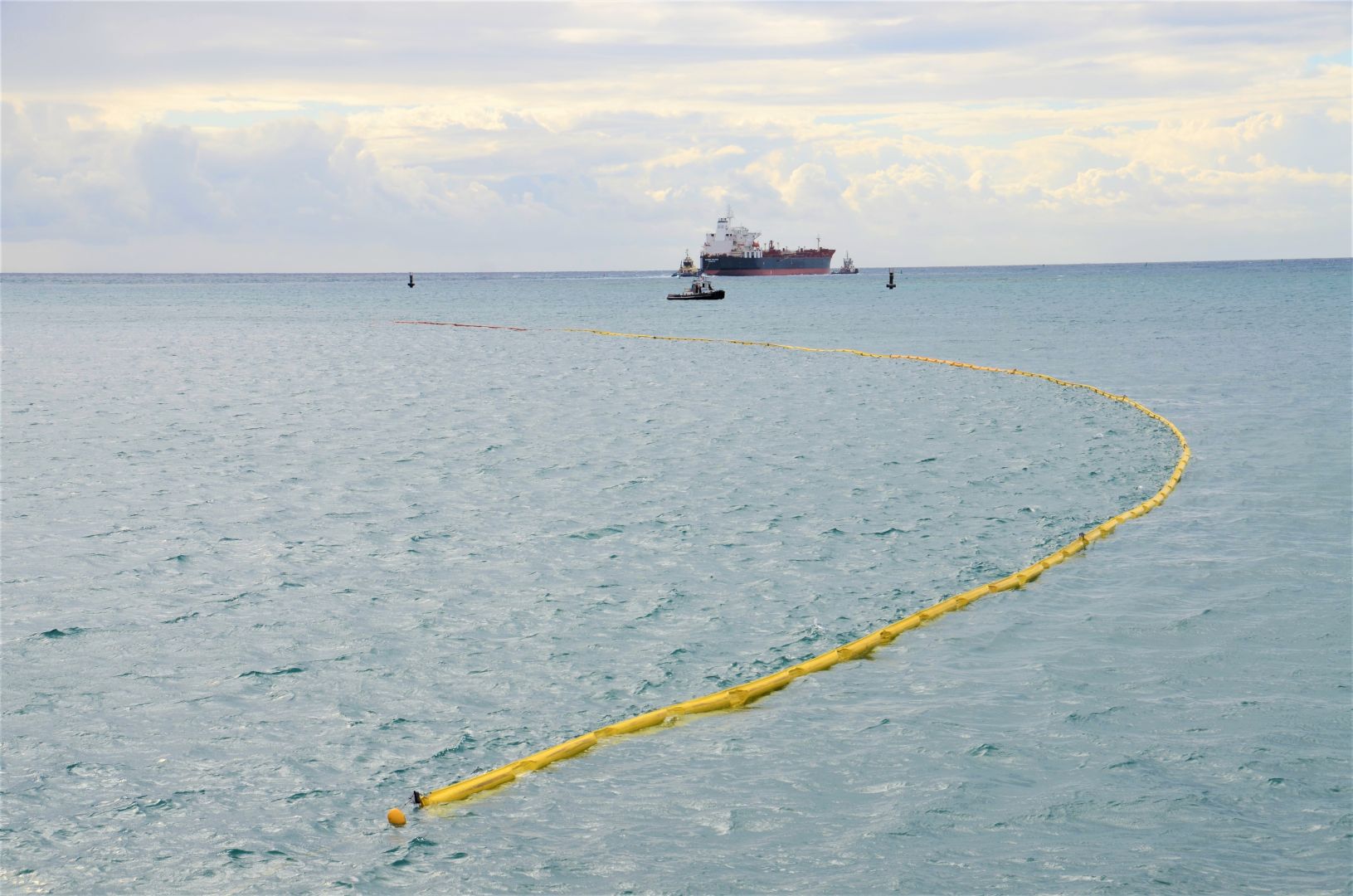
by DGR News Service | May 17, 2021 | Biodiversity & Habitat Destruction, Education, Indirect Action, Lobbying, Movement Building & Support, Protests & Symbolic Acts, Toxification
Nearly 100,000 people have signed a petition calling for the closure of a controversial oil and gas facility that has sickened residents of the U.S. Virgin Island. We in DGR deeply care about social justice, so we think it is important to expect president Biden to act against structural racism by shutting down an oil and gas facility that is poisoning a predominantly black community. But there are many oil refineries in the world and each one is poisoning their surrounding communities, human and nunhuman. As long as this cultures addiction to fossil fuels continues, it will obviously continue poisoning human and nonhuman communities.
This article was produced by Earth | Food | Life, a project of the Independent Media Institute.
By Reynard Loki
A controversial oil refinery on St. Croix, one of the U.S. Virgin Islands, is in the government’s crosshairs after a third incident in just three months has sickened people. On May 5, after gaseous fumes were released from one of the oil refining units of Limetree Bay Refining, residents of the unincorporated Caribbean territory reported a range of symptoms, including burning eyes, nausea and headaches, with at least three people seeking medical attention at the local hospital. At its peak in 1974, the facility, which opened in 1966, was the largest refinery in the Americas, producing some 650,000 barrels of crude oil a day. It restarted operations in February after being shuttered for the past decade.
A Limetree spokesperson said that there was a release of “light hydrocarbon odors” resulting from the maintenance on one of the refinery’s cokers, high heat level processing units that upgrade heavy, low-value crude oil into lighter, high-value petroleum products. The noxious odor stretched for miles around the refinery, remaining in the air for days and prompting the closure of two primary schools, a technical educational center and the Bureau of Motor Vehicles (BMV), which local officials said was shuttered because its employees “are affected by the strong, unpleasant gas like odor, in the atmosphere.”
Limetree and the U.S. government conducted their own air quality testing, with different results. The National Guard found elevated levels of sulfur dioxide, while the company said it detected “zero concentrations” of the chemical just hours later. “We will continue to monitor the situation, but there is the potential for additional odors while maintenance continues,” said Limetree, which is backed by private equity firms EIG and Arclight Capital, the latter of which has ties to former President Donald Trump. “We apologize for any impact this may have caused the community.”
The May 5 incident follows two similar incidents in April at the refinery that the Virgin Islands Department of Planning and Natural Resources (DPNR) concluded were caused by the emission of excess sulfur dioxide from the burning of hydrogen sulfide, one of the impurities in petroleum coke, a coal-like substance that accounts for nearly a fifth of the nation’s finished petroleum product exports, mainly going to China and other Asian nations, where it is used to power manufacturing industries like steel and aluminum. Days after the U.S. Environmental Protection Agency (EPA) told the company that it was violating the Clean Air Act after the April incidents, Limetree agreed to resume sulfur dioxide monitoring, while contesting the violation. “If EPA makes a determination that the facility’s operations present an imminent risk to people’s health, consistent with its legal authorities, it will take appropriate action to safeguard public safety,” the agency said in a statement. The Biden EPA withdrew a key federal pollution permit for Limetree on March 25, but stopped short of shutting down the facility altogether.
Care2 has launched a public petition—already signed by more than 98,000 people—urging President Biden to shut down the Limetree Bay Refining facility. The petition also notes the risk that the refinery poses to the island’s biodiverse wildlife, saying that “turtles, sharks, whales, and coral reefs… [are] threatened by the Limetree Bay Refining plant—both by what it’s done in the past, and by what it’s spewing right now.” The group also frames the human rights and environmental justice aspect of the ongoing public health situation on the island in historical terms: “On top of the obvious problem that no person should be poisoned with oil, St. Croix is an island with a highly disenfranchised population. The vast majority of residents are Black, the [descendants] of enslaved Africans brought to work on sugar and cotton plantations. For generations, the U.S. government has cared little about the well-being of people there.” (One recent example happened in the wake of Hurricanes Irma and Maria, which landed on the island in September of 2017. Even two months after the storms hit, many residents of St. Croix who were evacuated to Georgia were unable to return home, and felt abandoned by the government. “I feel like we are the forgotten people and no one has ever inquired how do we feel,” said one of the St. Croix evacuees at the time.)
After the May 5 incident, Limetree said, “Our preliminary investigations have revealed that units are operating normally.” Perhaps it is normal for such facilities to emit toxic fumes. But what’s not normal is the fact that such fumes should present a constant threat to people and the environment, and that, according to the environmental group Earthjustice, about 90 million Americans live within 30 miles of at least one refinery. Adding insult to injury is the fact that Black people are 75 more likely to live near toxic, air-polluting industrial facilities, according to Fumes Across the Fence-Line, a report produced by the NAACP and the Clean Air Task Force, an air pollution reduction advocacy group. That report also found that more than 1 million African Americans face a disproportionate cancer risk “above EPA’s level of concern” due to the fact that they live in areas that expose them to toxic chemicals emanating from natural gas facilities.
You don’t need to live next door to a refinery to feel its impact on your health; in fact, you can be several miles away. A study conducted last year by researchers at the University of Texas Medical Branch (UTMB) found an increased risk of multiple cancer types associated with living within 30 miles of an oil refinery. “Based on U.S. Census Bureau data, there are more than 6.3 million people over 20 years old who reside within a [30-mile] radius of 28 active refineries in Texas,” said the study’s lead author, Dr. Stephen B. Williams, chief of urology and a tenured professor of urology and radiology at UTMB. “Our team accounted for patient factors (age, sex, race, smoking, household income and education) and other environmental factors, such as oil well density and air pollution and looked at new cancer diagnoses based on cancers with the highest incidence in the U.S. and/or previously suspected to be at increased risk according to oil refinery proximity.”
In granting Limetree’s permit in 2018—a move that E&E News reported was made to “cash in on an international low-sulfur fuel standard that takes effect in January [2020]”—Trump’s EPA said that the refinery’s emissions simply be kept under “plantwide applicability limit.” But then in a September 2019 report on Limetree—which has been at the center of several pollution debacles and Clean Air Act violations for decades—the agency said that “[t]he combination of a predominantly low income and minority population in [south-central] St. Croix with the environmental and other burdens experienced by the residents is indicative of a vulnerable community,” and added the new requirement of installing five neighborhood air quality monitors. “[G]iven several assumptions and approximations… and the potential impacts on an already overburdened low income and minority population, the ambient monitors are necessary to assure continued operational compliance with the public health standards once the facility begins to operate,” the agency stated. Limetree has appealed this ruling with the EPA’s Environmental Appeals Board, arguing that “the EPA requirements are linked to environmental justice concerns that are unrelated to operating within the pollution limits of the permit.”
“It is unclear when the EPA’s appeals board will rule on the permit dispute. The Biden-run EPA could withdraw the permit, and it is also reviewing whether the refinery is a new source of pollution that requires stricter air pollution controls,” reports Reuters, adding that the White House declined to comment.
President Biden has made environmental justice a central part of his policy, including the overhaul of the EPA External Civil Rights Compliance Office, which is responsible for enforcing civil rights laws that prohibit discrimination on the basis of race, color, national origin, sex or disability. “For too long, the EPA External Civil Rights Compliance Office has ignored its requirements under Title VI of the 1964 Civil Rights Act,” states Biden’s environmental justice plan. “That will end in the Biden Administration. Biden will overhaul that office and ensure that it brings justice to frontline communities that experience the worst impacts of climate change and fenceline communities that are located adjacent to pollution sources.”
Now it is time for Biden to make good on his campaign promise. John Walke, senior attorney and director of clean air programs with the Natural Resources Defense Council, told Reuters in March that the situation in St. Croix “offers the first opportunity for the Biden-Harris administration to stand up for an environmental justice community, and take a strong public health and climate… stance concerning fossil fuels.”
Earth | Food | Life contributor Sharon Lavigne has previously written about a similar issue in another region before. Lavigne is the founder and president of RISE St. James, a grassroots faith-based organization dedicated to opposing the siting of new petrochemical facilities in a heavily industrialized area along the Mississippi River between Baton Rouge and New Orleans known as “Cancer Alley.” Writing in Truthout in October 2020 about St. James Parish, Louisiana, the predominantly Black and low-income community where she lives, Lavigne pointed out that “Democratic presidential nominee Joe Biden mentioned St. James Parish in his clean energy plan speech because we’re notorious for having the country’s highest concentration of chemical plants and refineries, [one of] the highest cancer rates, the worst particulate pollution and one of the highest mortality rates per capita from COVID-19 in the nation,” She added, “For those of us living here, it’s not just Cancer Alley; it’s death row.”
The stated mission of the EPA is “to protect human health and the environment.” When so many Americans face a disproportionate cancer risk simply by living near toxic industrial sites such as oil and gas refineries, the EPA is derelict in its duty. The Limetree Bay Refining facility has presented President Biden with an early test of his commitment to environmental justice. Considering the facility’s terrible legacy of ecological and civil rights violations, three new public health incidents in just the past two months, and the disproportionate and ongoing health risks faced by the community’s predominantly Black and low-income population, it is finally time for the federal government to revoke Limetree’s license to operate on St. Croix. This is a perfect chance for President Biden to show the country and the world just how serious he is about environmental justice.
Reynard Loki is a writing fellow at the Independent Media Institute, where he serves as the editor and chief correspondent for Earth | Food | Life. He previously served as the environment, food and animal rights editor at AlterNet and as a reporter for Justmeans/3BL Media covering sustainability and corporate social responsibility. He was named one of FilterBuy’s Top 50 Health & Environmental Journalists to Follow in 2016. His work has been published by Yes! Magazine, Salon, Truthout, BillMoyers.com, AlterNet, Counterpunch, EcoWatch and Truthdig, among others.

by DGR News Service | May 15, 2021 | Alienation & Mental Health, Human Supremacy, Listening to the Land, Mining & Drilling, Toxification
This is an edited transcript of this Deep Green episode. Featured image: “Watershed” by Nell Parker.
I’ve been thinking a lot lately about aquifers.
As we know, this culture is drawing down aquifers around the world. Aquifers are underground rivers, lakes, seeps – it’s underground water and they can be anywhere from just six inches below the surface down to about 10,000 feet and they are being drawn down around the world.
We’ve heard of the Ogallala aquifer – it’s is an absolutely huge aquifer that has been used for irrigation for the last hundred years – it’s being drawn down terribly. Aquifers can recharge but it’s very slow. The other thing that’s happening to aquifers around the world is that they’re being poisoned – sometimes unintentionally as people pollute the ground and it leaches down into the groundwater and sometimes intentionally as in fracking or fracking for geothermal. The latter are “green”; where they put chemicals down and then explode the rocks into a billion pieces so they can frack out the oil or they can then allow the heated water to escape to the surface which they use to generate electricity. When you poison an aquifer – if recharging an aquifer takes a long, long, long, long, long time – detoxifying an aquifer takes that same amount of time, longer. I don’t even know how long it takes before an aquifer would become detoxified. It’s all a very, very, very stupid idea.
I’ve said many times that my environmentalism – I love the natural world, I love bears, I love salmon and I love trees – but my environmentalism also emerges from a fundamental conservatism, that I think it’s really, really, stupid to create a mess that you can’t fix. You know, if you drive salmon extinct that’s a mess you can’t fix because you can’t bring them back, and if you toxify an aquifer you’ve created a mess that you can’t fix. This is something I learned very young from my mom. If you make a mess you clean it up and if you cannot clean up that mess you don’t make it in the first place.
None of that is the point on why I want to bring this up. There are a lot of studies that have been done about who lives in these aquifers. They make up about 40% of the microbial habitat on the planet and account for I think 20% of the microbial population on the planet – viruses, archaea, bacteria and also fungi down to maybe a hundred feet; fungi don’t go much lower in the aquifer. Without bacteria we would all die almost instantly. Bacteria do the real work of life on this planet.
There have been a fair number of studies done on who lives down there;
and I have seen a fair number of people express concern over the drawdown of aquifers; and this concern is always expressed in terms of if “we keep drawing it down we can’t draw down more”. “If we empty the Ogallala aquifer how are we going to irrigate?” It’s always self-centered. The same with toxification; “if we toxify this water then when we put in a well our water is going to catch on fire or we won’t be able to drink the water.”
They may exist but I have yet to see one person, one person, in the entire world express concern for the aquifer communities as communities themselves. That person may exist but I’ve never heard of them and if that person does care about those communities as communities, as biomes – I mean there are people who say “gosh I love the grasslands” and “I wish the grasslands were there because I love buffalo and I love buffalo for their own sake”; “I love beavers for their own sake”; “I love old growth forests for their own sake.” I’ve never heard anybody say the Ogallala aquifer should not be drained because it is a biome, a community, of its own and has the right to exist for its own sake without us drawing it down and without us toxifying it. If anybody does care about them and works on these issues, I would love to interview you; but this is not an ad for that. I want to raise the issue.
It took me years of thinking about aquifers before it occurred to me that they’re their own communities
and now I’m the only person I know who thinks about this – that when they’re drawn out that’s harming those communities. I want for that to start to become part of the public conversation about aquifers – that not only do aquifers provide water for us and for everybody else; not only do aquifers provide hugely – here’s one thing, when an aquifer collapses the soil subsides above it and I just read an article a few days ago about how that that causes tremendous harm to infrastructure; it’s like and..? AND..? And how about the ecological infrastructure? How about the communities who live down there? How about the surface native communities? I want to make it part of the public conversation that aquifers exist for their own sake. They have their own beingness and their own communities and those communities are just as important to them as your community is to you and my community is to me.
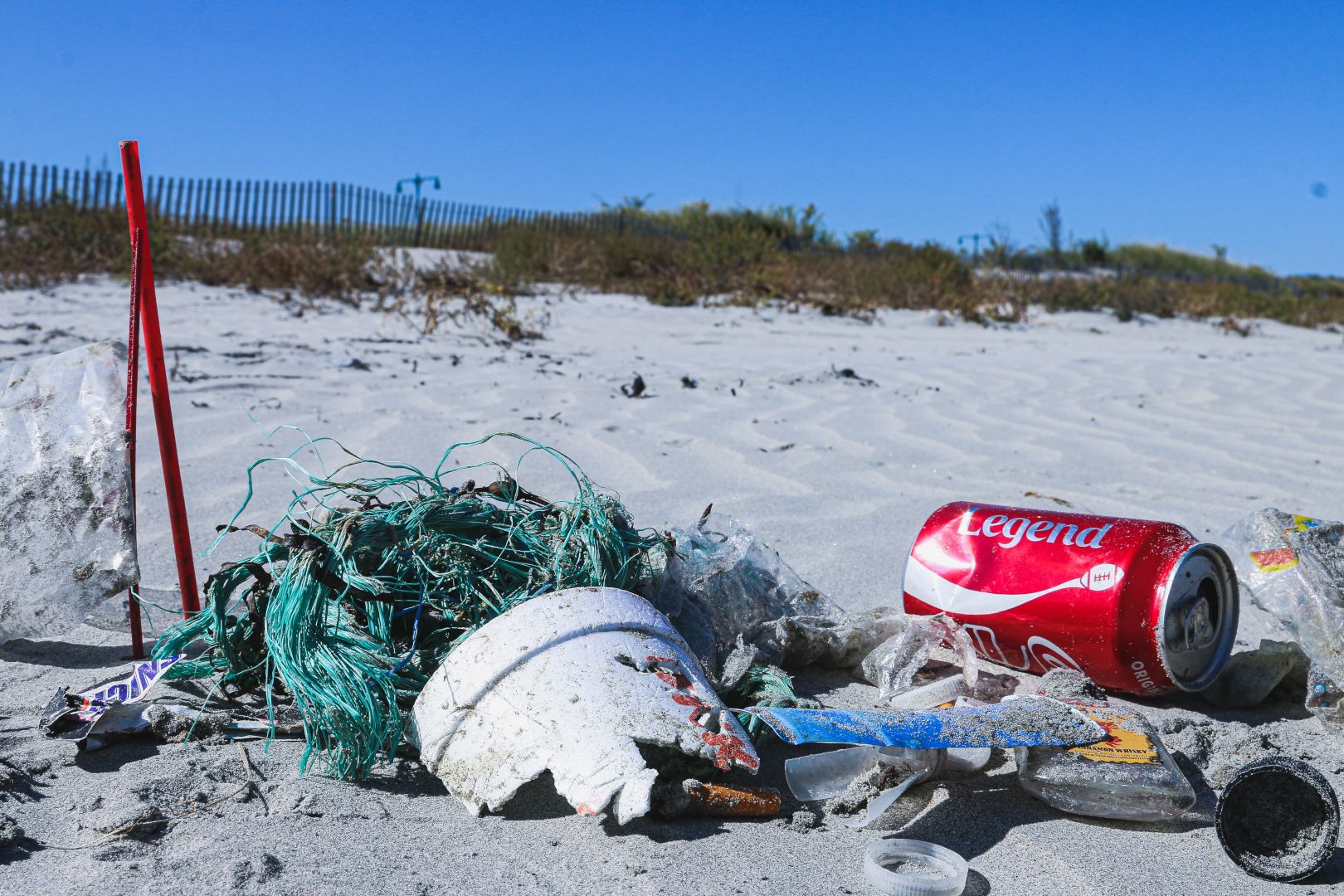
by DGR News Service | May 13, 2021 | Biodiversity & Habitat Destruction, Strategy & Analysis, The Problem: Civilization, Toxification
The aquatic food web has been seriously compromised by chemical pollution and climate change.
This article originally appeared on Climate and Capitalism
A report released today by the International Pollutants Elimination Network (IPEN) and the National Toxics Network (NTN) says that rising levels of chemical and plastic pollution are major contributors to declines in the world’s fish populations and other aquatic organisms.
Dr. Matt Landos, co-author of the report, says that many people erroneously believe that fish declines are caused only by overfishing. “In fact, the entire aquatic food web has been seriously compromised, with fewer and fewer fish at the top, losses of invertebrates in the sediments and water column, less healthy marine algae, coral, and other habitats, as well as a proliferation of bacteria and toxic algal blooms. Chemical pollution, along with climate change itself a pollution consequence, are the chief reasons for these losses.”
Aquatic Pollutants in Oceans and Fisheries documents the numerous ways in which chemicals compromise reproduction, development, and immune systems among aquatic and marine organisms. It warns that the impacts scientists have identified are only likely to grow in the coming years and will be exacerbated by a changing climate.
As co-author Dr. Mariann Lloyd-Smith points out, the production and use of chemicals have grown exponentially over the past couple of decades. “Many chemicals persist in the environment, making environments more toxic over time. If we do not address this problem, we will face permanent damage to the marine and aquatic environments that have nourished humans and every other life form since the beginning of time.”
The report identifies six key findings:
- Overfishing is not the sole cause of fishery declines. Poorly managed fisheries and catchments have wrought destruction on water quality and critical nursery habitat as well as the reduction and removal of aquatic food resources. Exposures to environmental pollutants are adversely impacting fertility, behavior, and resilience, and negatively influencing the recruitment and survival capacity of aquatic species. There will never be sustainable fisheries until all factors contributing to fishery declines are addressed.
- Chemical pollutants have been impacting oceanic and aquatic food webs for decades and the impacts are worsening. The scientific literature documents man-made pollution in aquatic ecosystems since the 1970s. Estimates indicate up to 80% of marine chemical pollution originates on land and the situation is worsening. Point source management of pollutants has failed to protect aquatic ecosystems from diffuse sources everywhere. Aquaculture is also reaching limits due to pollutant impacts with intensification already driving deterioration in some areas, and contaminants in aquaculture feeds affecting fish health.
- Pollutants including industrial chemicals, pesticides, pharmaceuticals, heavy metals, plastics and microplastics have deleterious impacts to aquatic ecosystems at all trophic levels from plankton to whales. Endocrine disrupting chemicals, which are biologically active at extremely low concentrations, pose a particular long-term threat to fisheries. Persistent pollutants such as mercury, brominated compounds, and plastics biomagnify in the aquatic food web and ultimately reach humans.
- Aquatic ecosystems that sustain fisheries are undergoing fundamental shifts as a result of climate change. Oceans are warming and becoming more acidic with increasing carbon dioxide deposition. Melting sea ice, glaciers and permafrost are increasing sea levels and altering ocean currents, salinity and oxygen levels. Increases in both de-oxygenated ‘dead zones’ and coastal algal blooms are being observed. Furthermore, climate change is re-mobilizing historical contaminants from their ‘polar sinks.’
- Climate change and chronic exposures to pesticides all can amplify the impacts of pollution by increasing exposures, toxicity and bioaccumulation of pollutants in the food web. Methyl mercury and PCBs are among the most prevalent and toxic contaminants in the marine food web.
- We are at the precipice of disaster, but have an opportunity for recovery. Progress requires fundamental shifts in industry, economy and governance, the cessation of deep-sea mining and other destructive industries, and environmentally sound chemical management, and true circular economies. Re-generative approaches to agriculture and aquaculture are urgently required to lower carbon, stop further pollution, and begin the restoration process.
![“May the truth be your armor” [Excerpts from Bright Green Lies]](https://dgrnewsservice.org/wp-content/uploads/sites/18/2021/05/BGL.jpeg)
by DGR News Service | May 11, 2021 | Biodiversity & Habitat Destruction, Climate Change, Education, Listening to the Land, Mining & Drilling, Strategy & Analysis, The Problem: Civilization, Toxification
This prologue is the first of a series of excerpts we will publish from the new book Bright Green Lies.
PROLOGUE
By Lierre Keith
We are in peril. Like all animals, we need a home: a blanket of air, a cradle of soil, and a vast assemblage of creatures who make both. We can’t create oxygen, but others can–from tiny plankton to towering redwoods. We can’t build soil, but the slow circling of bacteria, bison, and sweetgrass do.
But all of these beings are bleeding out, species by species, like Noah and the Ark in reverse, while the carbon swells and the fires burn on. Five decades of environmental activism haven’t stopped this. We haven’t even slowed it. In those same five decades, humans have killed 60 percent of the earth’s animals. And that’s but one wretched number among so many others.
That’s the horror that brings readers to a book like this, with whatever mixture of hope and despair. But we don’t have good news for you. To state it bluntly, something has gone terribly wrong with the environmental movement.
Once, we were the people who defended wild creatures and wild places. We loved our kin, we loved our home, and we fought for our beloved. Collectively, we formed a movement to protect our planet. Along the way, many of us searched for the reasons. Why were humans doing this? What could possibly compel the wanton sadism laying waste to the world? Was it our nature or were only some humans culpable? That analysis is crucial, of course. Without a proper diagnosis, correct treatment is impossible. This book lays out the best answers that we, the authors, have found. We wrote this book because something has happened to our movement. The beings and biomes who were once at the center of our concern have been disappeared. In their place now stands the very system that is destroying them. The goal has been transformed:
We’re supposed to save our way of life, not fight for the living planet; instead, we are to rally behind the “machines making machines making machines” that are devouring what’s left of our home.
Committed activists have brought the emergency of climate change into broad consciousness, and that’s a huge win as the glaciers melt and the tundra burns. But they are solving for the wrong variable. Our way of life doesn’t need to be saved. The planet needs to be saved from our way of life.
There’s a name for members of this rising movement: bright green environmentalists. They believe that technology and design can render industrial civilization sustainable. The mechanism to drive the creation of these new technologies is consumerism. Thus, bright greens “treat consumerism as a salient green practice.”1
Indeed, they “embrace consumerism” as the path to prosperity for all.2 Of course, whatever prosperity we might achieve by consuming is strictly time limited, what with the planet being finite. But the only way to build the bright green narrative is to erase every awareness of the creatures and communities being consumed. They simply don’t matter. What matters is technology. Accept technology as our savior, the bright greens promise, and our current way of life is possible for everyone and forever. With the excised species gone from consciousness, the only problem left for the bright greens to solve is how to power the shiny, new machines.
It doesn’t matter how the magic trick was done. Even the critically endangered have been struck from regard. Now you see them, now you don’t: from the Florida yew (whose home is a single 15-mile stretch, now under threat from biomass production) to the Scottish wildcat (who number a grim 35, all at risk from a proposed wind installation). As if humans can somehow survive on a planet that’s been flayed of its species and bled out to a dead rock. Once we fought for the living. Now we are told to fight for their deaths, as the wind turbines come for the mountains and solar panels conquer the deserts.
“May the truth be your armor” urged Marcus Aurelius. The truths in this book are hard, but you will need them to defend your beloved. The first truth is that our current way of life requires industrial levels of energy. That’s what it takes to fuel the wholesale conversion of living communities into dead commodities. That conversion is the problem “if,” to borrow from Australian anti-nuclear advocate Dr. Helen Caldicott, “you love this planet.” The task before us is not how to continue to fuel that conversion. It’s how to stop it.
The second truth is that fossil fuel–especially oil–is functionally irreplaceable. The proposed alternatives–like solar, wind, hydro, and biomass–will never scale up to power an industrial economy.
Third, those technologies are in their own right assaults against the living world. From beginning to end, they require industrial-scale devastation: open-pit mining, deforestation, soil toxification that’s permanent on anything but a geologic timescale, the extirpation and extinction of vulnerable species, and, oh yes, fossil fuels. These technologies will not save the earth. They will only hasten its demise.
And finally, there are real solutions. Simply put, we have to stop destroying the planet and let natural life come back. There are people everywhere doing exactly that, and nature is responding, some times miraculously. The wounded are healed, the missing reappear, and the exiled return. It’s not too late.
I’m sitting in my meadow, looking for hope. Swathes of purple needlegrass, silent and steady, are swelling with seeds–66 million years of evolution preparing for one more. All I had to do was let the grasses grow back, and a cascade of life followed. The tall grass made a home for rabbits. The rabbits brought the foxes. And now the cry of a fledgling hawk pierces the sky, wild and urgent. I know this cry, and yet I don’t. Me, but not me. The love and the aching distance. What I am sure of is that life wants to live. The hawk’s parents will feed her, teach her, and let her go. She will take her turn–then her children, theirs.
Every stranger who comes here says the same thing: “I’ve never seen so many dragonflies.” They say it in wonder, almost in awe, and always in delight. And there, too, is my hope. Despite everything, people still love this planet and all our kin. They can’t stop themselves. That love is a part of us, as surely as our blood and bones.
Somewhere close by there are mountain lions. I’ve heard a female calling for a mate, her need fierce and absolute. Here, in the last, final scraps of wilderness, life keeps trying. How can I do less?
There’s no time for despair. The mountain lions and the dragonflies, the fledgling hawks and the needlegrass seeds all need us now. We have to take back our movement and defend our beloved. How can we do less? And with all of life on our side, how can we lose?
1. Julie Newman, Green Ethics and Philosophy: An A-to-Z Guide (Thousand Oaks, CA: SAGE Publications, 2011), p. 40.
2. Ibid, p. 39

by DGR News Service | May 9, 2021 | Biodiversity & Habitat Destruction, Colonialism & Conquest, Education, Mining & Drilling, Strategy & Analysis, Toxification
By Straquez
The Colonial Years
Of course, Mexico has been in the front line of atrocities and destruction that come out of mining. Mexico is a land blessed with wide biodiversity that includes minerals that have caught the attention of foreign companies who then act as the machinery to do what this industrial culture does best –converting the living into the dead. High revenue for the company stakeholders, negative benefit for the inhabitants and nothing but endless destruction for the land.
It is said that Aztecs used to embellish and protect their bodies with jewelry, such as necklaces with charms and pedants, armlets, bracelets, leg bracelets, and rings. They would also use tools and vases fabricated with precious metals like gold and silver. These metals were found in deposits located on the surface and not underground like nowadays, this allowed the usage of such mineral resources without much effort or effect.
In 1521, Tenochtitlan, the Aztec capital, was taken over by the Spanish army consolidating Mexico’s Conquest. From then on, mining as an industry started in Mexico as Spaniards started to exploit places where mineral deposits could be located. Mining was carried out mostly in the North and Center of what is now modern day Mexico. Many important mineral deposits started to be discovered in places that later would become famous as they would generate wealth (for whom?) and human settlements. It was only a matter of time before the land subject to mining would be turned into cities such as Guanajuato, San Luis Potosi, Zacatecas, Taxco, Chihuahua and Durango.
Mines kept spreading and mining created many jobs and wealth (I hate to be repetitive, but whose wealth?). Is there even a mention of all the evils done to the indigenous land and people? Not at all, the history of mining is portrayed as progress, as an unquestionable good thing, as a victory and in no terms as a defeat or loss. The whole History of Civilization is pretty much like that, now that I think of it.
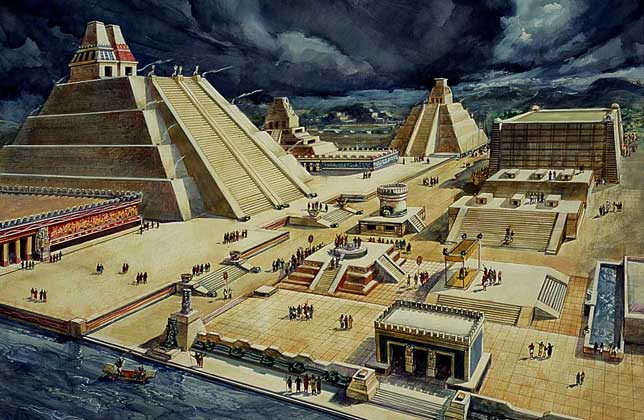
After Independence
When the Independence movement of Mexico started in 1810, mining projects were negatively affected and had to be stopped. It was not until 1823 when the movement ended that mining activity was restarted. Remember that I mentioned my surname Straffon being from Cornwall, England? Well, it was precisely during these years that the British Real del Monte Company was established thanks to English capital. This company provided both technology and workforce, some of it straight from Cornwall to re-establish silver mines located in Real del Monte, Hidalgo. 1,500 tons of equipment including 9 steam engines with their large boilers, 5 for pumping, 2 for crushing ore and 2 for use in powering saw mills; various pumps; large cast iron pipes to connect the pumps to be placed at the bottom of the mines with the surface. And so started the rebuilding and modernization of the district’s mining industry. The Cornish miners had brought the Industrial Revolution to Mexico.
By the beginning of the 20th century, Mexico was entering a major political transformation as new laws and codes were created. During Porfirio Diaz’ administration, for example, most of the railroad infrastructure was built all through the country, focusing on the main mining centers that were already established. Then the American corporations showed up offering the means for better extraction as mines during the times of Nueva España were certainly used, but could not be exploited to their maximum because Spain lacked the technology and resources to do so.
The Fresnillo Company, Mazapil Cooper Co., Peñoles Mining Co., and Pittsburg & Mexico Tin Mining Co. were some of the companies looking to make a profit out of Mexico’s mines. Parallel industries started to rise, the economy diversified and the country’s elite dreamed of Mexico being on its way to becoming a world economy. Metallurgical processes were improved with maximum return on capital and mineral processing efficiency as the main goal. The bonanza would cease somewhat in the 1960s when the mining industry was nationalized and mine administration passed to the charge of Mexican professionals.
Then came NAFTA, and in 1992 mining laws were modified substantially in order to accommodate the demands of big national and transnational corporations. Compared to the prior 300 years, production of gold and silver doubled even though several communities resisted the exploitation. Social and environmental damage increased substantially as a consequence due to legal impunity and the ability of the mining organizations to trample over human rights. The Mexican Mining Law of 1992 is a unique and unconstitutional piece of legislation, and rides roughshod over earlier laws which allowed for judicial challenges and which consequently made it difficult for companies to carry on their business with impunity. The solution of the mining organizations was, of course, to create a whole web of corruption that extends to the three branches of government. We are still living the influence of NAFTA until this very day. Business as usual.
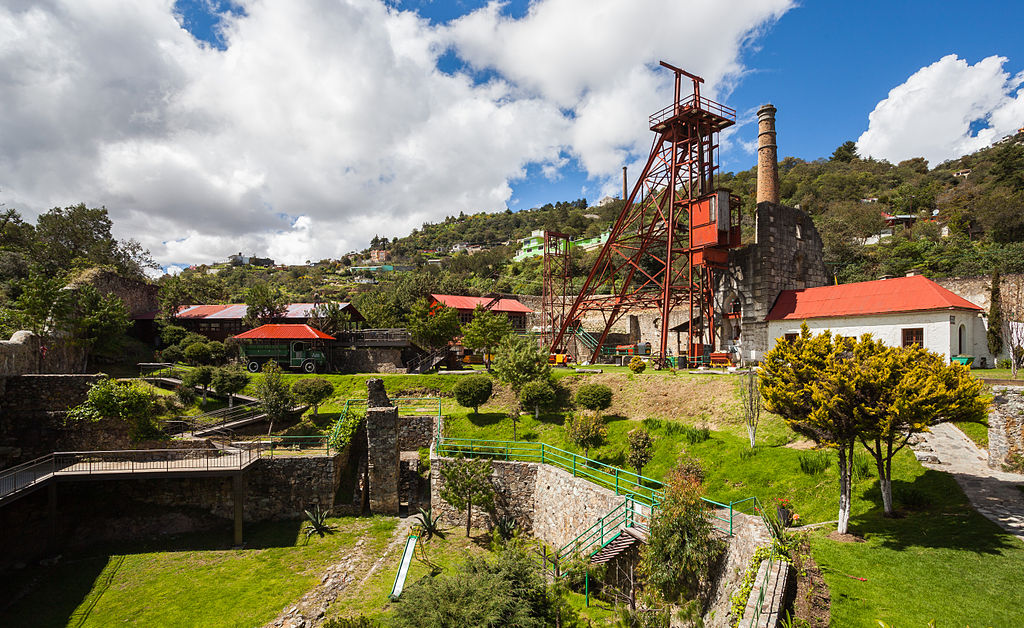
Keep on Digging
Doctor María Teresa Sánchez Salazar has set out very interesting mine “conflict maps” which consider many parameters including land conflict, environmental conflict, social conflict, labor conflict or a combination of those factors. Data shows that 75% of these conflicts have to do with land, that is, land grabs by the mining companies or due to environmental conflicts, and almost 70% of them happen in open-pit mines. Another interesting number – 60% of the conflicts have involved foreign company owned mines.
She adds that there are places where conflict started due to land grab and the subsequent leasing to mining companies and the implementation of ways to displace people from their native lands. Of a total of 181 natural areas, 57 have been leased for mining. Eight of them focus more than 75% of the surface to this activity. Twenty of them have at least 93% of their surface leased. One example is the Rayón National Park in Michoacan, its land is practically 100% leased for mining as well as Huautla Mountain Range that is between Morelos, Puebla and Guerrero.
Safety is also an issue for the Mexican mining sector. There are powerful cartels that have quite an influence in the entire country, including mining states such as Sonora, Chihuahua, Sinaloa and Guerrero. Mines have been object of many armed robberies that have increased during the COVID-19 pandemic. Extortion, threats and employee kidnapping have been the most common crimes reported by the mining companies.
If this was a Robin Hood kind of deal then I should certainly support it, but in the end workers are the most affected, operations are seldom slowed down and the exploitation just does not stop. If the criminal gangs were to take over, not much would change as, let’s be honest, both companies and cartels pretty much operate the same way but at a different scale.
Bacadéhuachi
In times prior to the year 1600, this area was inhabited by Opata indigenous settlements. In the year 1645 a mission named San Luis Gonzága de Bacadéhuachi was founded by the Jesuit missionary Cristóbal García. Its current inhabitants dedicate their lives to taking care of livestock and making cheese, bread and tortillas which are sold among themselves; within the world economy, they don’t have much of a choice. Being only 270 kilometers away from Hermosillo, capital of the State of Sonora, the road takes 5 hours to transit due to the uneven and complex terrain that in turn makes it a dangerous travel.
This town is on the same route of the high mountain range that takes you to Chihuahua, its neighbor state. This is a high-risk road as armed conflicts are constantly raging between groups that are looking to take control of this area. Some months ago, armed men went into the municipality creating such a situation and ending the peaceful environment to the point that the Mexican National Guard and the State Police now have to be constantly present.
Bacadehuachi has around 500 houses, most of them made of adobe, occupied by around 1,083 people according to the The National Institute of Statistics and Geography (INEGI). It has cobblestone roads and few are made of concrete due to the minimal vehicle transit. It is more common to see people on horses or donkeys than in motor vehicles. Everything is around the corner, there are no gas stations nearby. It has 3 municipal police officers that issue around 10 different fines a year. There is only one health center for basic checkups and a doctor is available every 3 days.
Regarding education, only one preschool, one primary school and one secondary school exist. For those who want to receive higher education, their only choice is to go to Granados, a municipality 50 kilometers away from the town. The road is risky to say the least, young students must stay at the neighboring town and go back to their families at the weekends in a municipality sponsored bus. To go to college is a victory, a luxury, a rare occurrence for the townspeople.
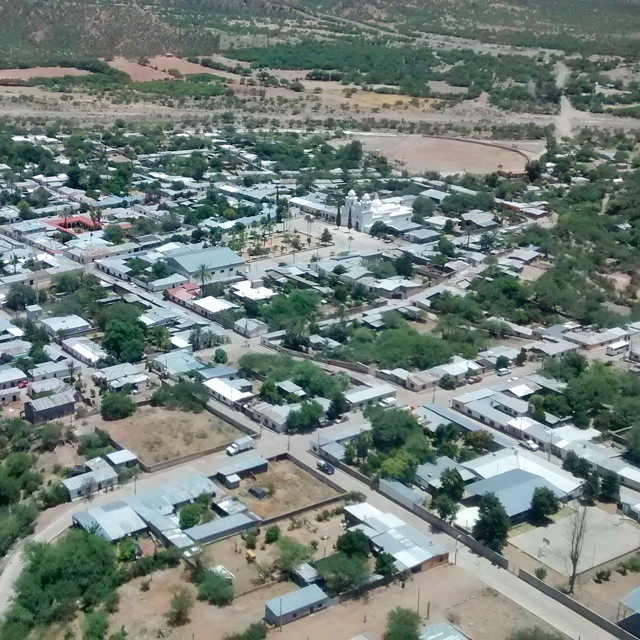
Don’t Know What I’m Selling
Miguel Teran is a farmer and former owner of La Ventana ranch. He sold his land to Bacanora Lithium for the Sonora Lithium Project. He asserts that the first explorations started back in 1994. Geologists came to the La Ventana ranch in government cars. They took some soil samples, came back 8 years later, measured the land and after that they never came back. Ten years ago, Bacanora Lithium carried out some studies. They drilled around 115 holes with the permission of Miguel and then they offered to buy the land.
I told them: you know what you’re buying, but I don’t know what I’m selling. Don’t take advantage of me. That’s how the negotiation started, but they wanted to pay as if it was a mere piece of land.”
Miguel wasn’t disappointed yet he acknowledges that he could have made a better deal as he has since found out what treasure lies in the 1,900 hectares that were sold and integrated into the Sonora Lithium Project. For the time being and until the mineral is extracted, Miguel may allow his cows to graze there as stipulated in the contract.
I am within my rights until I get in the way, but I have already bought some land.” Finally, he adds, “sometimes my car battery would fail and they would tell me that I had lithium here, but I only know about horses and chickens; not lithium.”

The Trauma of Our Technological Selves
As a city-dweller, my experience with Nature has been for the most part parks and decorative gardens. Since I live so disconnected from the land itself, I can only enter into relationship with my own species, our creations and the animals we call pets. For a long time I’ve been scared of insects and even though working in a garden has helped diminish the feeling, I still feel uncomfortable in certain scenarios. Soil and its minerals are even weirder to me, because I had never considered them something other than a resource, a component that can be used for my benefit through technology. They don’t seem alive, they don’t seem to have any other purpose than sitting there for us to transform them into something else.
Perhaps my biggest realization during my journey to connect with the land is the enormous damage that Capitalism, Colonialism and Industrialism have inflicted on the planet. It has reached the point that we are also physically, psychologically, emotionally and spiritually bent and broken enough for us to barely notice the indifference and violence around us. Indifference and violence done to each other and to ourselves. And yet, those who notice don’t always take action. Even less, those who know and take action don’t have a clear idea, much less a strategy to stop the abuse.
This is not something that modern technology can fix. Not the electric cars, not the solar cells nor the electric batteries. Not the tote bags and the bamboo toothbrushes that you can use as compost. Our home is being gutted and we just stand there watching, unsure on what to do. When you actually want to stop a killer, you go ahead and do it. You don’t offer knives from recycled metal or whips made out of hemp. You go ahead and put an end to the abuse by neutralizing any capacity to inflict damage that the perpetrator might have. You stop the killing, you stop the behavior, you commit yourself to do so.
Today I read that only 3% of world’s ecosystems remain intact. Civilization is going down regardless of what we do. Nothing can grow indefinitely without collapsing. The real question is what will be left when our civilization goes down. Our struggle resides in stopping it before there is nothing left.
Cristopher Straffon Marquez a.k.a. Straquez is a theater actor and language teacher currently residing in Tijuana, Baja California, Mexico. Artist by chance and educator by conviction, Straquez was part of the Zeitgeist Movement and Occupy Tijuana Movement growing disappointed by good intentions misled through dubious actions. He then focused on his art and craft as well as briefly participating with The Living Theatre until he stumbled upon Derrick Jensen’s Endgame and consequently with the Deep Green Resistance: Strategy to Save the Planet both changing his mind, heart and soul. Since then, reconnecting with the land, decolonizing the mind and fighting for a living planet have become his goals.





![“May the truth be your armor” [Excerpts from Bright Green Lies]](https://dgrnewsservice.org/wp-content/uploads/sites/18/2021/05/BGL.jpeg)





